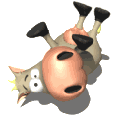
A recent find of mine are these wonderful carved soapstone animals from Kenya.
In the past century, Kenya has become renowned for its soapstone (called kisii stone in Africa) carvers. Soapstone carving didn't catch on in Kenya until the 1940s, after Indian laborers arrived to build the railroad from the Kenyan coast to Uganda.
Soapstone is actually a variety of talc, a soft mineral of a soapy feel and a greenish, whitish, or grayish color, usually occurring in foliated masses. It is hydrous silicate of magnesia and forms by alteration of these magnesium-rich rocks and minerals at low temperatures and high pressure. Rocks consisting mainly of talc are known as steatite or soapstone, and are soft enough to carve into various shapes. Soapstone is the softest mineral on the Mohs hardness scale (soapstone being a 1, or the softest and 10 being the hardest, i.e. diamond). Whew! You made it through that scientific gibberish. Want to make it simple? Its a soft rock, about half the way between chalk and marble and its easy to carve and porous so it can absorb coloring and dyes. Kisii stone typically exhibits coloration ranging from creamy white to yellow to red to dark grey, depending on the mineral(s) present in the stone.

Kisii stone is only available in the Tabaka Hills of Western Kenya, and the Kikuyu men of the Kisii community mine and carve the stone. The stone is mined using hoes, pick axes, shovels, iron rods and pangas, which are large knives used to chop the stone into smaller pieces. Most of the carvers are not professional carvers, but are actually sustenance farmers who carve in the evening and in the dry season. These men typically live in small villages with their families and often have to walk five to seven miles to the soapstone mines.
The carvers do not use any form of power tools – only hand made tools usually of their own design. After finding a suitable size piece of soapstone, a rough carving is made, and then refined using a small knife called a kisu. The finished carvings are polished using wet sand, and then cleaned with a small brush made from long animal hairs. Men do most of the carving while mainly women apply painted and dyed patterns to the kisii stone carvings. Traditionally natural pigments are used: clays and ground minerals, goat fat mixed with charcoal from the fire (for black), crushed shells for white, berries or boiled barks for red, roots of the indigo plant for blue, etc. The painting is finished with mineral pigments and natural vegetable dyes. Incised patterns are added after dying. Truly soapstone pieces are singular works of modern folk art to be cherished and enjoyed for many years.

I have these listed on Rubylane at http://www.rubylane.com/shops/udderlygoodstuff



No comments:
Post a Comment